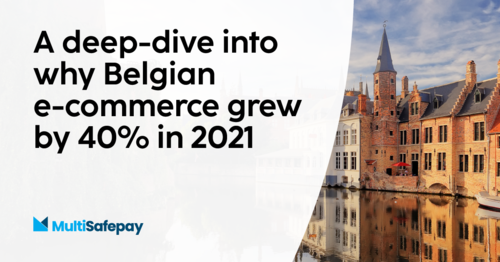6 steps for successful cross-border sales
The opportunities of cross-border sales
Ecommerce sales within the EU and worldwide are growing year over year. In 2020, the online cross-border market in Europe was worth EUR 146 billion, which is an increase of 35% compared to the situation one year before. Out of this, 25.5% of the total ecommerce in Europe is cross-border - making expansion a compelling proposition for merchants.2
Preparing for cross-border sales: 6 key steps
Step 1: Find the right market for your business
As a first step, you want to identify which markets are the best fit for your products and services. It’s best practice to expand country-by-country or region-by-region rather than trying to sell everywhere at once. Begin by getting to know different target audiences, understanding their mentality and shopping behaviors, and eventually identifying how to talk to them and win their trust by adapting to their preferences.
While online shopping has been the way to go in some countries, others have just experienced the shift to its full extent since the pandemic. For example, in Spain and Italy, credit cards are dominant, and buyers in the Netherlands or Belgium prefer using local payment methods. An excellent place to begin is by checking out our complete guide to European cross-border sales. [link to gated guide]
Step 2: Determining tax and pricing strategies
Commerce is crossing time borders and currencies. It’s important to consider tax requirements and potential effects on your business as you prepare your expansion strategy.
The introduction of Strong Customer Authentication (SCA) in January 2021 aimed to reduce fraud and increase the security of online payments within the EU.
The value-added tax (VAT) regulations were modernized in July 2021 to strengthen the internal European market, harmonize cross-border transaction rules and ensure fair competition with non-European traders. In effect, the tax rate is charged in the EU member state the customer is based in, regardless of the trader’s location. Online marketplaces and platforms are now responsible for computing and collecting VAT.
Due to increased reporting requirements, companies are looking for technology solutions that will help them increase efficiency and manage their tax compliance process.
Step 3: Consider shortcuts via marketplaces to increase brand visibility
Did you know that in 2020, 60% of European ecommerce turnover came from marketplaces?3 This makes platforms like Amazon, Etsy, Bol.com for the Netherlands, or eBay for Germany easy and trusted options to kick off cross-border sales in Europe. Besides reaching new audiences via marketplaces, they offer you the chance to get to know a particular market and test the waters before investing too much time and money into country-specific marketing campaigns and fine-tuning your website.
Step 4: Localize the customer experience
Localizing your shop to a specific market means that your products and the purchase experience will represent the local language. Language is and has always been an ice-breaker. Users in different countries might prefer to shop in their language, and therefore, speaking your customers' language can make the difference between browsing and buying.
Localization also means you should understand the desired shopping and the checkout experience. Besides translating content, that includes international customer support, displaying local currency, and offering preferred payment methods during checkout. For example, display the cost of each item in local currency by using Multi-Currency tools. Make sure your website can provide that information automatically for foreign users. As online shopping becomes a part of everyday life, consumers have become savvier and tend to compare prices before choosing which site to shop with, as found by JP Morgan.4
Step 5: Add local payment methods
How customers prefer to pay online depends on their location. If you don’t create a familiar and trustworthy payment experience, you risk cutting off entire countries from your addressable market. While in the Netherlands, for example, 90% of online shoppers in 2020 used iDEAL as their payment method, the local payment method Bancontact takes up two-thirds of online payments in Belgium. In Germany, buy now, pay later (BNPL) options such as Klarna are particularly popular, and in Spain and Italy, credit cards still rule. Long story short: If you want to expand internationally, offering the right payment methods to your customers is vital.
Step 6: Partnering with local delivery services.
Shipping across borders is one of the biggest challenges of global e-commerce. Did you know that shipping fees are one of the main reasons buyers abandon their shopping cart if deemed too high? You can easily avoid shopping cart abandonment by selling via marketplaces and taking advantage of their services, such as handling fees on behalf of the seller.
For your webshop, use third-party shipping services such as DHL, FedEx, or UPS, which equally take care of duties and tariffs and ensure a smooth handling of product returns.
Looking to expand your business into new markets? Download our complete internationalization guide for a deep-dive into local markets.
1https://www.accenture.com/_acnmedia/pdf-102/accenture-cross-border-the-disruptive-frontier.pdf
2https://ecommercenews.eu/cross-border-ecommerce-europe/
3 https://www.retaildetail.eu/en/news/general/european-e-commerce-dominated-marketplaces
4 https://www.jpmorgan.com/merchant-services/insights/reports/european-overview


